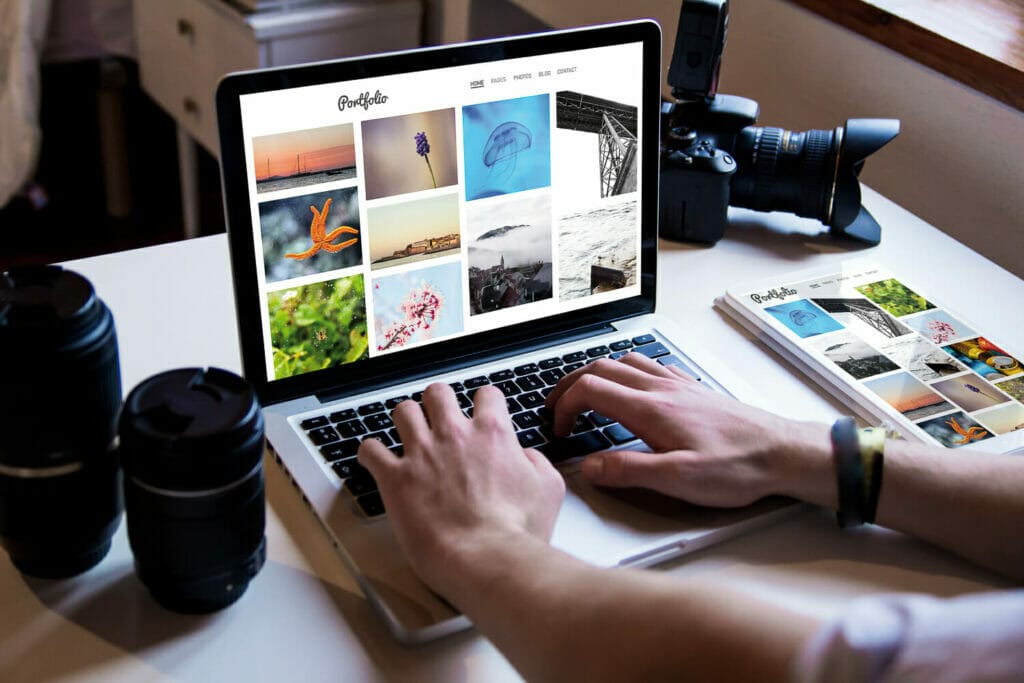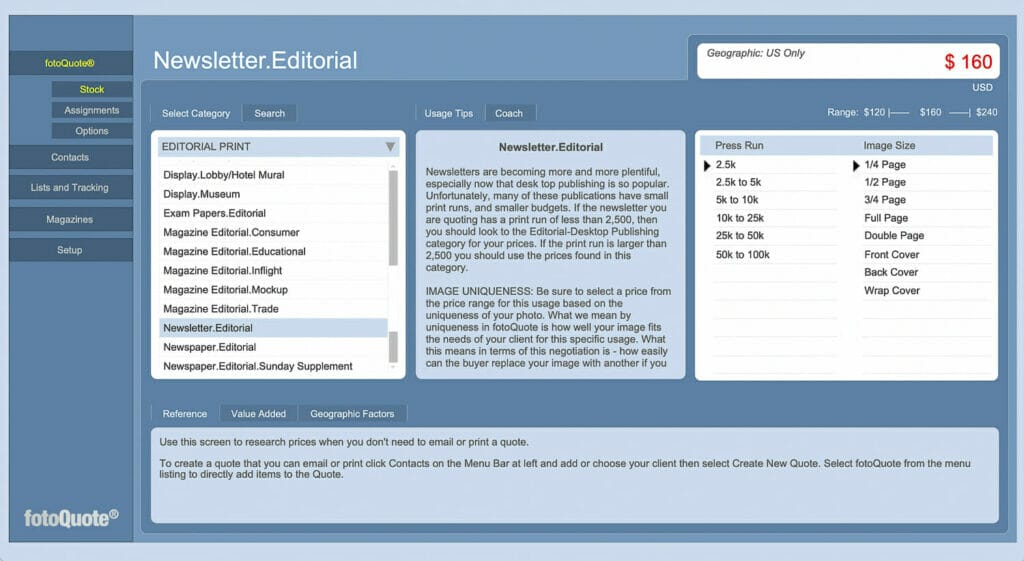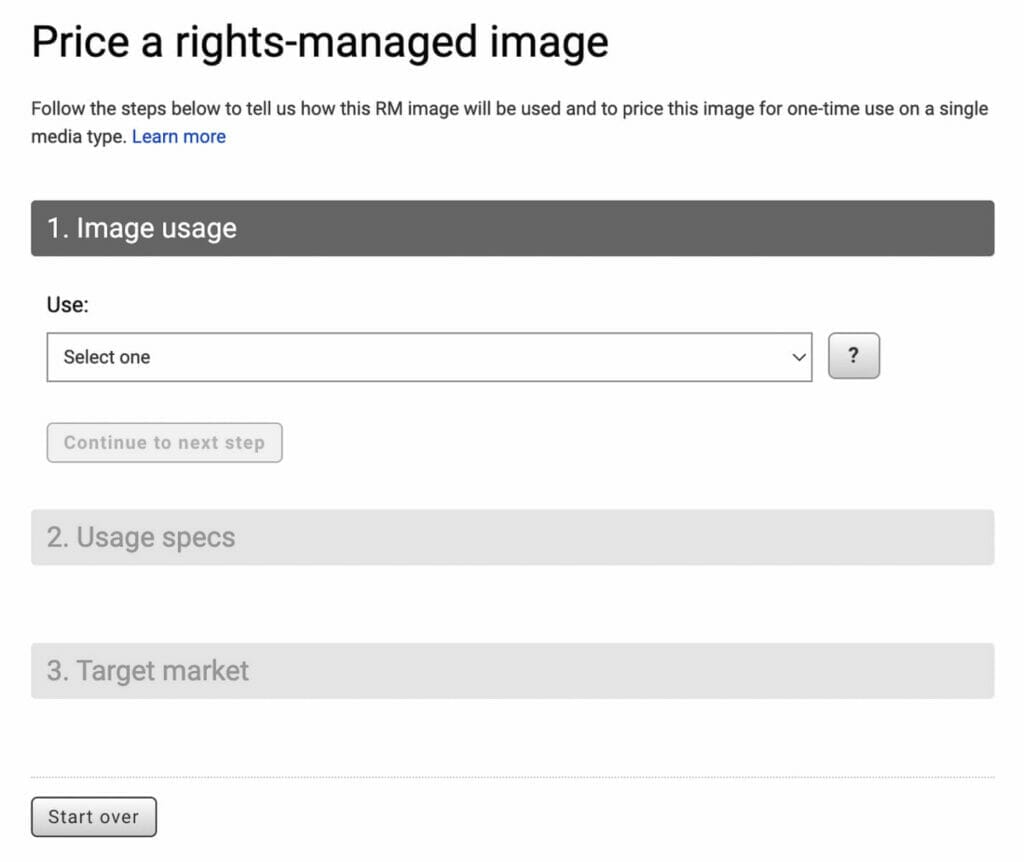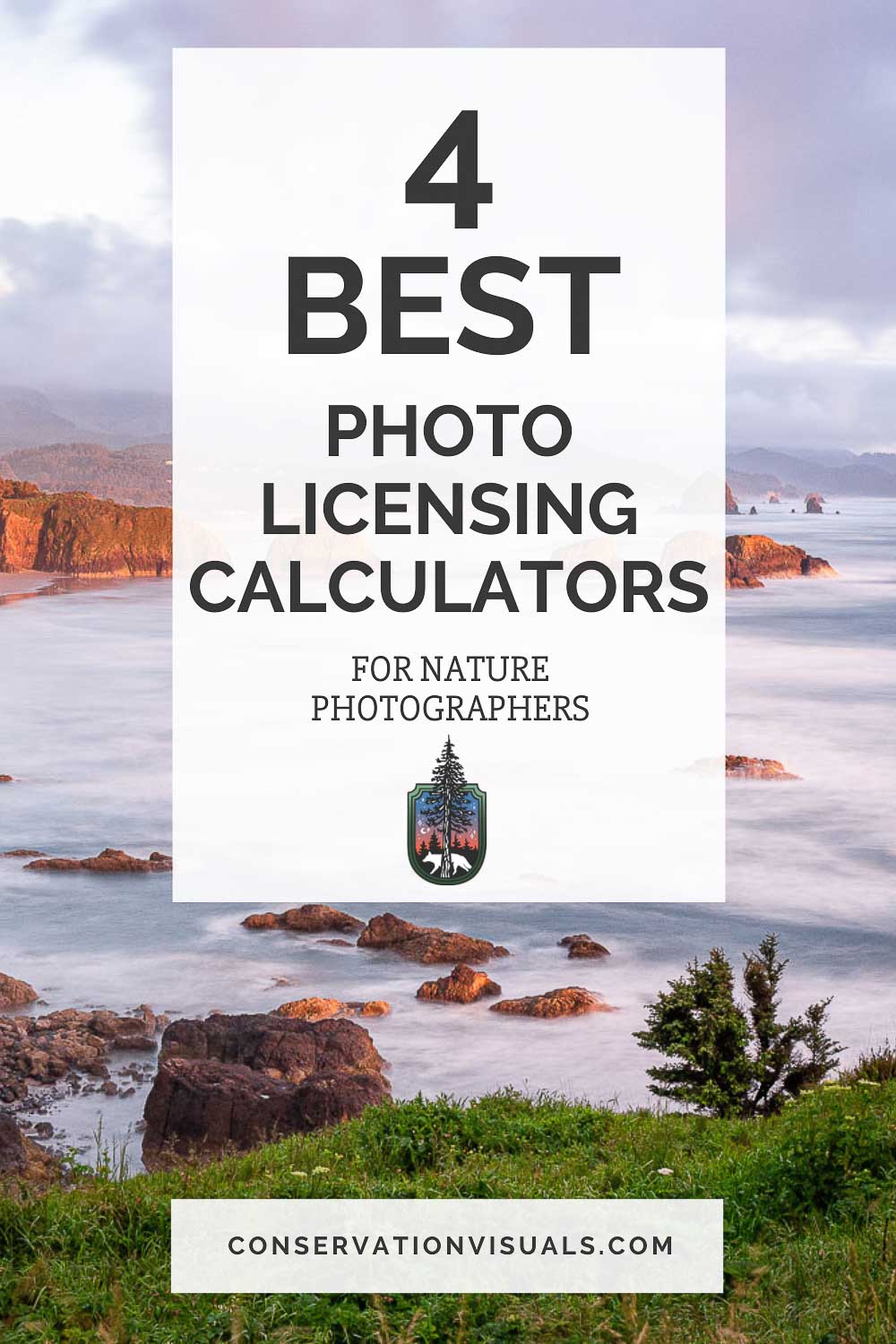Setting your rates requires careful consideration and research. But with a fee calculator, you can ease the process significantly and develop a fair – and profitable – system for determining consistent, industry-standard usage fees for your photos.
In this article, you’ll learn what to consider when deciding on a usage fee and see our favorite go-to calculators to make it a fast and headache-free process.
Contents
- Why you should charge license fees
- If you’re donating images, should you still quote a licensing rate?
- Considerations for how much to charge for image rights
- Are there standard usage fees for the photography industry?
- Why use an image licensing fee calculator?
- The 4 best photo licensing fee calculators for nature photographers
- When licensing images, what else should photographers consider?
Why you should charge license fees for the publication of your photos
In creative fields such as photography (especially conservation photography), it’s easy to undervalue yourself and your work. By having set rates that are calculated logically and fairly, you create confidence and clarity in your business practices that benefit your clients and give you a steady reminder that what you do is valuable.
Beyond acknowledging your value, there are more practical matters to consider as well.
First, remember you’re a business – just like the publications using your images. Both of you deserve to make a profit.
Additionally, charging for the use of your images gives you a say in how your work is ultimately used, protecting your intellectual property and the integrity of the image.
Speaking of integrity, charging a fair and reflective fee for your work supports and elevates the photography of your colleagues and the profession as a whole.
If you’re charging nothing or too little for your photos, you’re not just short-changing yourself but also undercutting the efforts of other professional photographers.
Ultimately though, the income you generate through usage fees will help you afford to continue creating high-quality content. The images are your product, and producing them isn’t free.
From the travel expenses incurred to the equipment you purchase and insure, the revenue from selling the product – your photographs – is how you fund your business. So, it may not be all about the Benjamins, but the Benjamins matter.
Photo: McLittle Stock/Shutterstock
If you’re donating images, should you still quote a licensing rate?
If you’re a nature photographer volunteering with a conservation organization, you might be donating your images. Even so, it’s a great idea to quote how much you usually charge. Here are 3 (of many) reasons why:
1. It helps the organization see the real-world value of what you’re providing
Quoting industry-standard usage fees on your licensing agreement – even if you aren’t charging that amount – demonstrates that your images have tangible value and gives the organization an understanding of how much they’d be paying if they were to purchase these images from another source.
High-quality photography is essential yet constantly undervalued, so quoting what you usually would charge reminds a conservation organization to take your contribution seriously as a professional service (just like any other service they use, from printing to postage to website hosting!).
2. It sets you up for being able to charge later on
You may be donating your photos now but want to avoid feeling obligated perpetually to donate them. Let’s say you want to charge the organization for your work later on (whether that’s usage fees for stand-alone images or even media packages or assignment work). In that case, adding a usage fee quote to your photo licensing agreement sets the stage for that change.
An organization can see that you’re someone used to charging for your photography and can get an idea about how much to budget for if they work with you in the future.
3. It gives you practice in valuing your work
If you’ve never charged for your photography, add usage fees to your licensing agreements as an addendum.
When you’re starting out, donating your photos is a great way to get a foot in the door and practice business skills like creating photo packages, crafting licensing agreements, setting boundaries, and more.
Recommended: Check out episode 47 on the Impact podcast How to Be a Better Volunteer with These 7 Business Mindset Strategies for more about setting yourself (and your nonprofit!) up for a successful collaboration.
And when you’re not used to charging for your work, calculating licensing fees and adding them to agreements gives you the practice without the pressure of talking money with someone and asking for payment.
You get comfortable knowing that your work is of value, confident in knowing just how much to charge, and clear in how to put it out into the world with confidence.
Photo: grass-lifeisgood/Shutterstock
Considerations for how much to charge for image rights
Let’s explore the key considerations to take into account when calculating usage fees.
Rights-managed or royalty-free
Rights-managed images are when a photographer permits someone to use the photo, but the photographer has say over how it is used.
You and the client determine how an image may be used and the rate for that use, and that’s the only way the photo can be used. If the client wants to use it again for another purpose, they must purchase another license from you.
There’s also the opportunity to determine if the use is exclusive or non-exclusive (which we’ll talk more about in a moment).
Typically photographers can charge higher rates for rights-managed photos but make fewer sales.
Royalty-free images are when a photographer charges one fee, and the person or company can use the photo multiple times for multiple projects.
There are far fewer restrictions with a royalty-free license than on rights managed license, which makes it attractive for a client who might want to pay once for an image and have freedom over use.
With royalty-free, the photographer (or usually, stock agency) charges less for each license but does a higher volume in sales.
In cases where you want to maintain a say in how the image is used, rights-managed may be the right option for you. In contrast, a royalty-free license enable you to license your photographs for general use with an upfront, one-time fee.
Rights-managed licensing takes more administrative overhead, but you know you aren’t licensing images to a company, cause, or use that doesn’t align with your values.
Duration of image use
One of the considerations we mentioned of a rights-managed agreement is the duration of use. If the image is licensed for just a short period of time, the fee is lower compared to a license that grants access for a longer period or indefinitely.
Exclusive or non-exclusive
Whether you want to sell your images for exclusive use by one party or offer their use to multiple users depends on your business goals.
In selling an image license exclusively to one buyer, you can charge more for the photo because the client knows they’re the only one who can use it. That exclusivity is valuable and so comes with a higher cost.
On the other hand, if you make an image nonexclusive, you can sell the image to multiple buyers. You won’t charge as much, but you can make up for that with multiple sales.
In deciding which route to take, consider your customers’ needs and which avenue provides you more profit based on the specific photograph you’re selling.
Rarity and/or difficulty
Think about everything that went into creating the photograph. Was it taken on a trip to a location that was expensive or difficult to access? Did it require special equipment or a skill that’s taken specific training or years of experience to attain? Is it of a species that’s rarely seen or photographed? When figuring out licensing fees for an image, the rarer the shot, the higher the value.
Client budget
Though this factor shouldn’t drive the decision-making process, it is worth considering as offering a fair and reasonable fee that meets both parties’ needs enhances your reputation and can bring in additional business down the road.
To keep the process as straightforward and transparent as possible, knowing what your client can afford will allow you to set realistic expectations and avoid price negotiation disputes.
And, of course, usage
The ultimate usage is vital to consider because it dictates how widely and for what purpose the image will be used. Suppose it’s for a large-scale commercial campaign. In that case, it’s likely to generate more attention and thus demand a higher fee than one for personal or internal use.
Photo: matka_Wariatka/Shutterstock
Are there standard usage fees for the photography industry?
That’s why a license fee calculator is so helpful – it can help you determine a range, and you can figure out what you want to quote within that range while feeling confident you’re in the right ballpark.
And that brings us to the next section…
Why use an image licensing fee calculator?
Fortunately, usage fee calculators simplify this process by using variables such as image size, distribution, and usage rights to create estimates based on current market rates.
Let’s explore how using a usage fee calculator can help streamline your workflow and optimize your pricing strategy.
1. They simplify the process. Calculating usage fees manually can be time-consuming, complicated, and prone to errors. Using a license fee calculator simplifies the process by providing an estimate based on industry-standard rates and factors, eliminating the need to manually calculate usage fees based on various usage rights and other variables.
2. They remind you of variables. License fee calculators prompt you to input variables such as usage rights, image size, distribution, and other factors that affect the cost of licensing an image. The calculator then uses this information to estimate the usage fee, ensuring that all relevant variables are considered.
3. They keep up with current rates. Fee calculators help you keep up with current market rates and usage trends because they’re developed by industry experts with extensive knowledge of pricing and image licensing practices.
All of this leads to transparency and clarity in your pricing. By being able to adjust variables and show exactly how the fee is calculated, you avoid misunderstandings and customize estimates based on your client’s specific needs.
Using a licensing fee calculator eases the process, saves time, promotes fairness and transparency in pricing, and ultimately helps photographers and clients save money in the long run.
The 4 best photo licensing fee calculators for nature photographers
#1 Recommendation: Cradoc Fotoquote
Photo: Screenshot from Cradoc Fotoquote
As our top choice, Cradoc’s Fotoquote offers a user-friendly interface and an extensive database of pricing information that can be customized based on location, usage rights, image size, distribution, and other variables.
All you need to do is select your variables for image use. Fotoquote generates a price range for you to charge, all based on current market rates and trends. Easy as that!
One of our favorite aspects of Cradoc’s FotoQuote is that it provides users access to a wide range of business tools and resources, including contract templates, estimating forms, and invoicing software.
This is our go-to calculator choice whenever we need to create licensing quotes.
Getty Images
Photo: Screenshot from Getty Images
With this tool, you only see what Getty charges, rather than an industry-standard range as Fotoquote provides. Still, it’s a great free option for getting into the right ballpark.
Base Usage Rate
Photo: Screenshot from The Association of Photographers
Ask your peers!
Though not technically a calculator, this is a very helpful strategy. With market conditions constantly changing, getting feedback from other photographers can provide valuable insights into current pricing practices and allows you to build relationships and collaborate within the industry.
It is also a great way to find out what a specific media outlet is paying for images. You might discover they’ve offered you a lower rate than what they’ve offered another photographer. This gives you extra information and confidence to take back to the negotiation table.
Photo: fizkes/Shutterstock
When licensing images, what else should photographers consider?
Duration of license
It’s great to have an expiration date for every photo license. This way, you can change things up down the road.
You might decide to raise your licensing rates. When a license expires, you can quote your new rate for a renewal. Or, perhaps you don’t want to continue licensing to a particular client anymore. You don’t have to renew your license when it expires. Or, say a different client is willing to pay for the exclusive use of an already licensed image. You can make a new agreement for exclusive use when the existing license expires.
Knowing that a license agreement is ending allows plenty of flexibility to go a different (potentially more lucrative) route.
Third-party use
Specify in your licensing agreement whether or not a client can provide your photos to third parties, such as media outlets. (Hint: You’ll likely clarify that a client can use the images for their purposes but NOT provide them to others.)
This is something that pops up a lot for wildlife conservation photographers who provide images to nonprofit conservation organizations. Say the nonprofit gets featured in an article by a media outlet, and that outlet requests images. The nonprofit won’t be allowed to provide your photos to them per the terms of your agreement. But they can direct the outlet to you for licensing – and of course, you can charge the outlet a usage fee.
So, clarity around third-party use can provide the chance to earn additional income from images you’ve already licensed.
Sublicensing
Sublicensing is when a licensee provides a license to someone else for an image they’ve licensed from the original photographer. A sublicense allows the first user to retain all fees paid by others for using the same image without needing to share any earnings with the original photographer.
In other words, your client can license your image to someone else – and they don’t have to give you a cut of the income.
Sometimes allowing sublicensing makes sense. Depending on the situation, you can earn additional money and expand your reach without having to do the leg work. However, it might not be your preference. So be clear in your agreement if sublicensing is or is not allowed.
Administration overhead
Licensing your photos comes with a certain amount of work. You’ll need to keep track of your licensing agreements and when they’re ending so that you can reach out to clients to see if they’d like to renew.
You’ll also want to track how your clients use the images. Sometimes clients can – usually by accident – breach the terms of an agreement. For example, a nonprofit staffer might provide one of your images to a media outlet, not realizing they aren’t supposed to. So, you’ll want to watch for any hiccups and correct them when they happen.
It might seem like there’s waaaaay too much to think about when it comes to commercial image licenses, but it doesn’t take long to get the swing of it. And it’s well worth the time and energy to get to know the process and personalize it to what works best for you… since your future paychecks depend on it!
Final thoughts
By charging fair and reflective usage fees, you acknowledge the time and effort that goes into creating each photo and support and elevate the field of photography as a whole.
Find the fee calculator that best helps you set prices that allow you to continue doing what you love – creating high-quality photos for the world to enjoy.



















